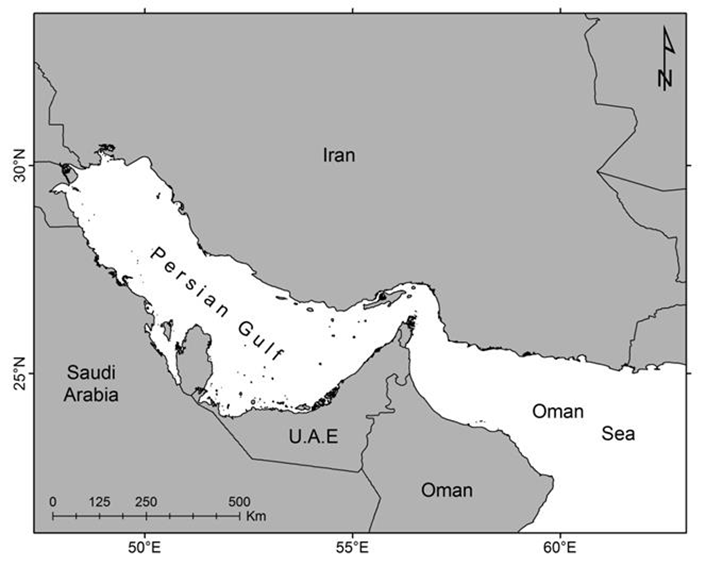Gulf of Oman
The Sea of Oman, or the Makran Sea, is located northwest of the Arabian Sea and the Indian Ocean, and east of the Persian Gulf. Iran is situated to the north of this sea, while Oman and a small part of the United Arab Emirates are located to the south. In international organizations and other languages, it is also referred to as the Gulf of Oman. The geographical position of the Sea of Oman lies between 56 to 60 degrees east longitude and 22 to 27 degrees north latitude.

The southern coasts of Iran, from the Strait of Hormuz to the port of Gwadar, border the Sea of Oman. The length of the Sea of Oman is approximately 610 kilometers, and its area is 103 × 903 square kilometers. This sea is relatively deep, reaching depths of up to 3,500 meters, although it shallows to 72 meters near the Strait of Hormuz. Due to the Tropic of Cancer passing through this sea, the Sea of Oman is one of the warmest seas in Southwest Asia. The waves that form in the Sea of Oman are mostly influenced by monsoon winds. The Sea of Oman is bordered by land on three sides and connects to the open sea on one side, linking the Persian Gulf to the open waters. The Sea of Oman connects to the Arabian Sea and the Indian Ocean at Ras al-Hadd on the coast of Oman. The Sea of Oman holds significant importance as the only maritime route for Iran to the open seas, especially in terms of shipping.
This region experiences very dry and low precipitation summers, but intense evaporation, particularly in the summer, can act as a dynamic factor for creating monsoon phenomena. In the Sea of Oman, due to the blowing of Indian monsoon winds (with wind direction predominantly from the south in summer), the advance of low-pressure centers and equatorial fronts from the Indian Ocean can cause severe storms, especially in this sea and its coasts. The prevailing winds in the Sea of Oman are categorized into two types: local winds or monsoon winds, and tropical storms and cyclones, such as the occurrence of tropical cyclone Gonu.
The dry air of the adjacent tropical region, combined with persistent winds and high temperatures in summer, significantly increases evaporation from the Sea of Oman. The average annual water temperature of the Sea of Oman is about 27°C, with temperatures peaking at 34°C in July and August, and dropping to a minimum of 20°C in January. The salinity of the surface water in the Sea of Oman is 36.4 psu. Another important climatic characteristic of the coastal areas adjacent to the Sea of Oman is the wave pattern. The waves that appear in the Sea of Oman can be divided into two categories: waves generated by monsoon winds and waves caused by tropical storms, with tropical storms being very rare in the region.


